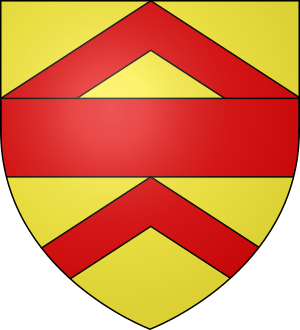Little Dunmow facts for kids
Quick facts for kids Little Dunmow |
|
|---|---|
 Thatched cottage |
|
| Population | 284 (2011) |
| OS grid reference | TL655215 |
| District |
|
| Shire county | |
| Region | |
| Country | England |
| Sovereign state | United Kingdom |
| Post town | DUNMOW |
| Postcode district | CM6 |
| Police | Essex |
| Fire | Essex |
| Ambulance | East of England |
| EU Parliament | East of England |
Little Dunmow is a small village in the Uttlesford area of Essex, England. It sits in the beautiful valley of the River Chelmer. The village is about 3 miles (5 km) east of Great Dunmow.
You can reach Little Dunmow from the A120 road. Just follow the B1256 towards Braintree for a short distance. The old part of the village has about 99 homes.
The Flitch Way is a lovely country path that follows an old railway line. It connects Little Dunmow to a newer community called Flitch Green. Flitch Green was built where an old sugar beet factory used to be. It has about 850 homes and is a separate community.
Contents
History
Early History and Land Ownership
Little Dunmow was once the main home of a "feudal barony." This was a special area of land given by the king to a powerful lord. The first lord of Little Dunmow was Ralph Baynard in 1086. His family owned the land for a while.
Later, the land was given to Robert Fitz Richard. His family became very important. One of his descendants was Robert FitzWalter I (who died in 1235). He was famous for being one of the 25 "sureties" who made King John agree to the Magna Carta. The Magna Carta was a very important document that limited the king's power.
The Priory Church
The local church in Little Dunmow was started in 1104 by Lady Juga Baynard. A few years later, in 1106, her son Geoffrey Baynard founded an Augustinian priory here. A priory is a type of monastery where monks or canons live and pray.
Most of the original priory buildings are gone now. However, the beautiful Lady Chapel still stands. It became part of the large Little Dunmow Priory church, which is now the Parish Church of St Mary the Virgin. You can still see its grand columns and lovely Gothic windows. These show how magnificent the priory once was. The rest of the priory was destroyed after the Dissolution of the Monasteries. This was when King Henry VIII closed down many monasteries in England.
Little Dunmow in the 21st Century
In 2001, a new housing area called Flitch Green began to be built. By 2008, many more people lived in Flitch Green than in the old village. In 2009, Flitch Green became its own separate parish. However, it still uses Little Dunmow as its postal address.
Another new development, Chelmer Mead, was suggested in 2007. Plans for 3,000 houses were stopped because of local opposition. Smaller plans for houses have also been turned down.
Notable Buildings
Little Dunmow has many old buildings from the 14th, 15th, 16th, and 17th centuries. These include Priory Place, which is on the site of the old priory. Other historic homes are Brick House, Ivy House, Monks Hall, and Rose Farm. You can also see several charming thatched cottages around the village. The centre of Little Dunmow is a special "conservation area." This means its historic character is protected.
The Famous Flitch Trials
Little Dunmow was the original home of the famous Flitch Trials. These trials now happen in Great Dunmow every four years. This ancient custom rewarded a married couple with a "flitch of bacon." To win, they had to prove they had been married for a year and a day without any regrets.
The couple had to swear an oath while kneeling on two sharp stones in the churchyard. After swearing, they were carried through the village. In later years, they were carried in the special Flitch Chair. This chair is thought to be made from old church pews. You can still see this 15th-century chair inside the church today.
The last trial at the priory was in 1751. However, the custom became popular again in Victorian times. This happened after a novel called The Flitch of Bacon was published in 1854. It was written by William Harrison Ainsworth.
See also
 In Spanish: Little Dunmow para niños
In Spanish: Little Dunmow para niños





